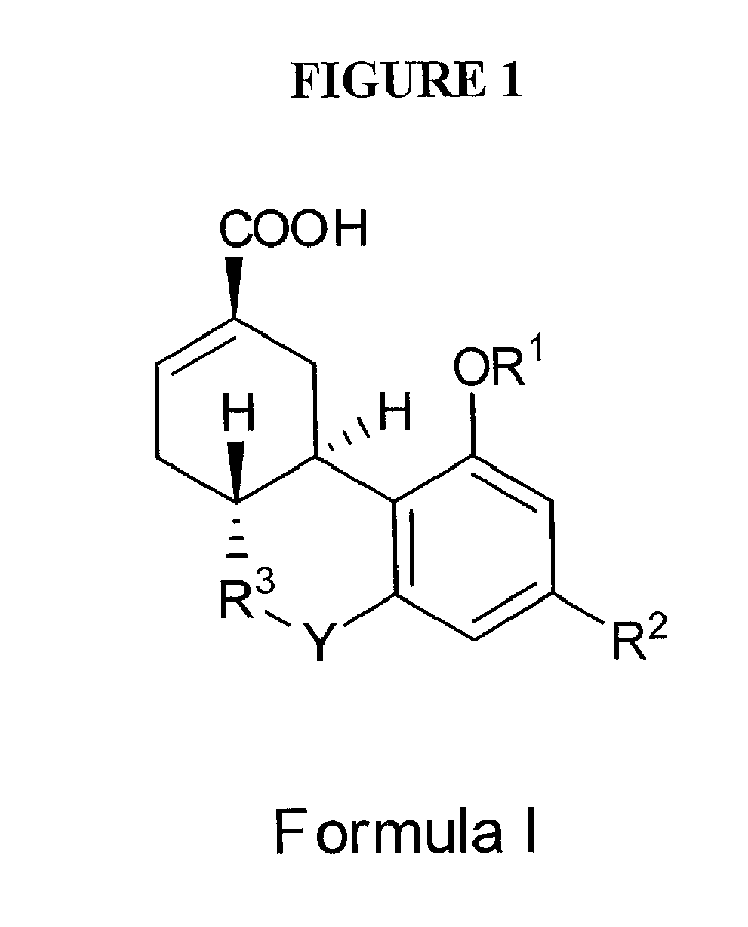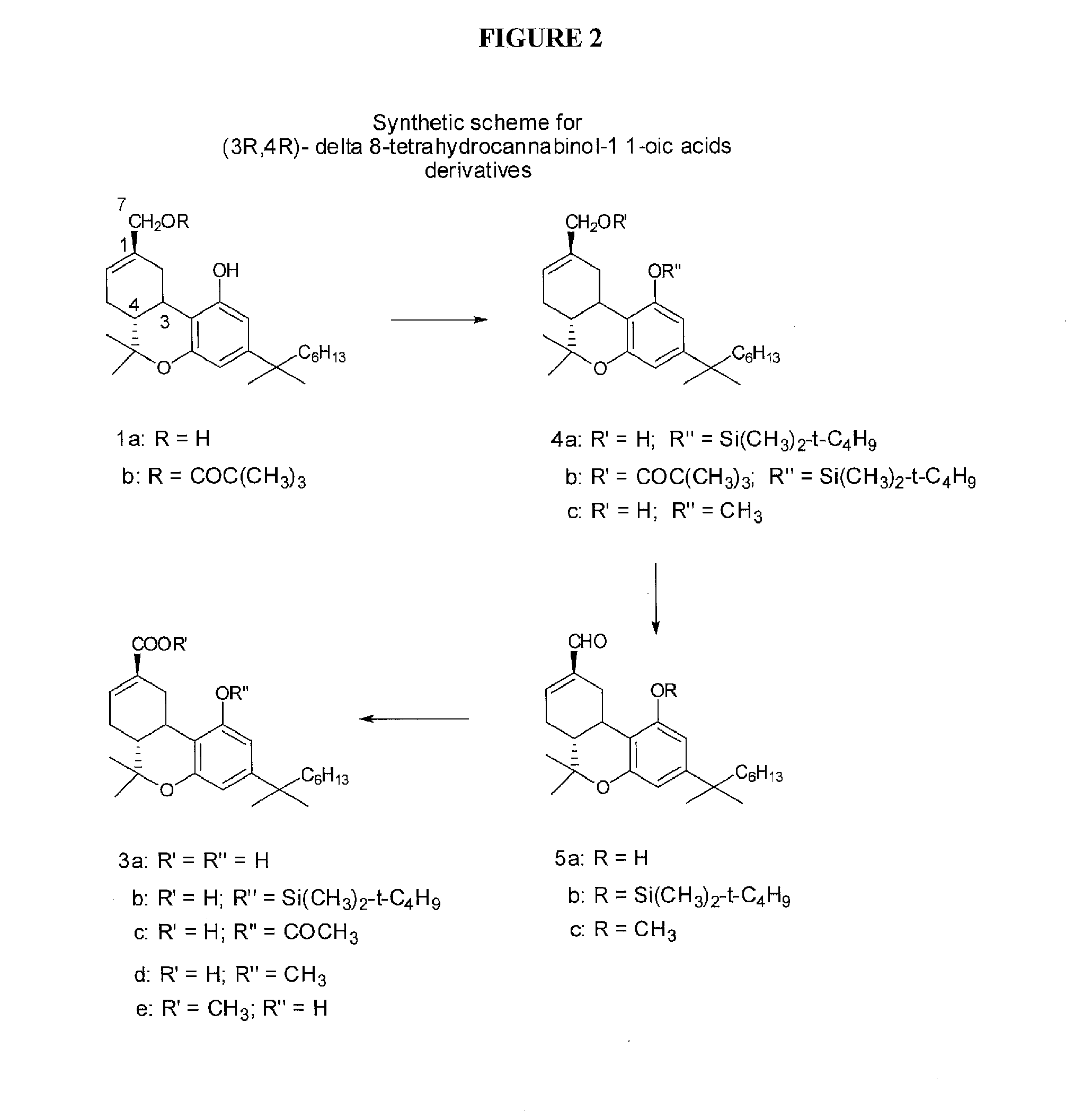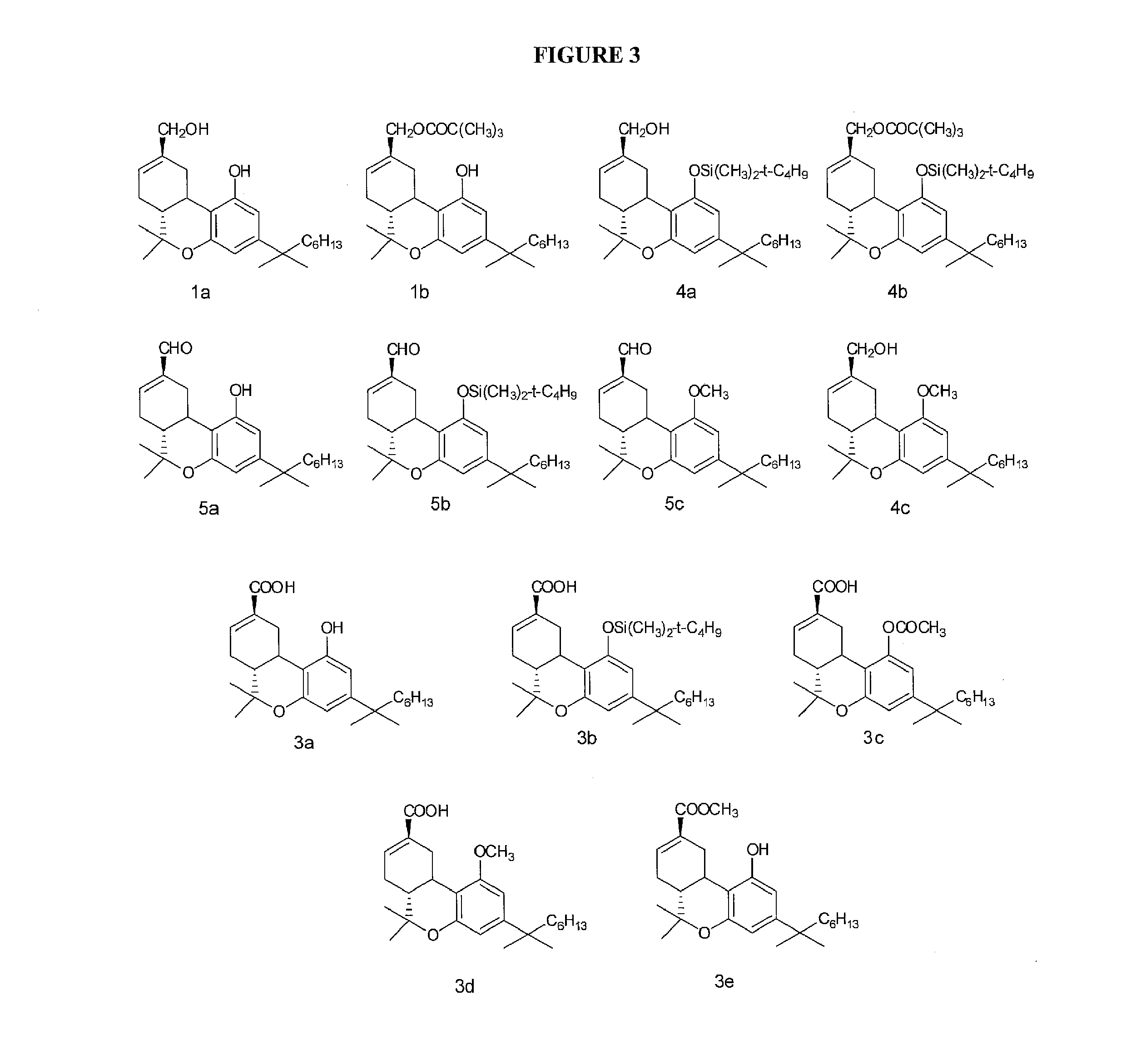Methods of treating fibrotic diseases using tetrahydrocannabinol-11-oic acids
a technology of tetrahydrocannabinol and fibrotic diseases, which is applied in the field of medical chemistry, can solve the problems of not being able to directly target the fibrotic mechanism(s) of approved treatments, and achieve the effect of reducing one or more symptoms of a diseas
- Summary
- Abstract
- Description
- Claims
- Application Information
AI Technical Summary
Benefits of technology
Problems solved by technology
Method used
Image
Examples
example 1
The Synthetic Cannabinoid Ajulemic Acid Exerts Potent Anti-Fibrotic Effects in Experimental Models of Systemic Sclerosis
Introduction
[0128]Cannabinoids play key-roles in several—biological processes including inflammation, immunomodulation, and vasomotor response.[3, 4] Moreover, the cannabinoid system might also be implicated in the pathogenesis of fibrosis [5, 6]. The endocannabinoid system comprises the two specific cannabinoid receptors, CB1 and CB2, their endogenous ligands, and the machinery dedicated to endocannabinoid synthesis and degradation [7]. In experimental models of dermal fibrosis, the CB1 and CB2 cannabinoid receptors modulate fibrogenesis by abrogating the underlying inflammation [8, 9]. In addition, cannabinoid agonists are able to limit extracellular matrix (ECM) production by disrupting the TGF-beta cascade, and downregulating proliferation and activation of dermal fibroblasts [10, 11]. These data argue for a direct role of cannabinoids in limiting fibrosis, ind...
PUM
 Login to View More
Login to View More Abstract
Description
Claims
Application Information
 Login to View More
Login to View More - R&D
- Intellectual Property
- Life Sciences
- Materials
- Tech Scout
- Unparalleled Data Quality
- Higher Quality Content
- 60% Fewer Hallucinations
Browse by: Latest US Patents, China's latest patents, Technical Efficacy Thesaurus, Application Domain, Technology Topic, Popular Technical Reports.
© 2025 PatSnap. All rights reserved.Legal|Privacy policy|Modern Slavery Act Transparency Statement|Sitemap|About US| Contact US: help@patsnap.com



